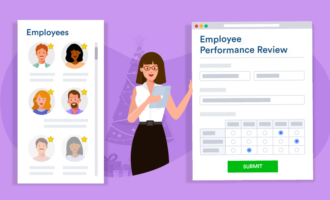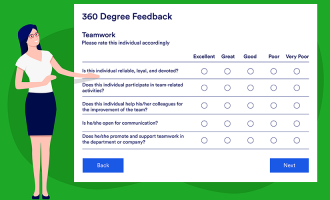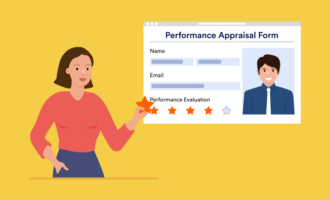Periodic conversations between employees and managers — which are an opportunity for management to hear from and evaluate employees — have largely replaced the venerable annual review. The annual performance review was an HR mainstay, beginning with the mass industrial employment of the past and continuing in a number of sectors until recently.
Why this annual ritual persisted — especially since neither the reviewer nor the reviewed found it very enjoyable — is anyone’s guess. It basically worked for the era it was designed for, when product cycles were longer.
Maybe it’s simply because humans, even when living in cities and working indoors for generations, still think in annual cycles. One full year simply feels like just about the right amount of time between thorough reviews.
But for better or for worse, the pace of business has been increasing for the past few decades. Ultimately, that pace has made it more challenging for organizations to meet with and review their teams every 12 months.
Check it out…
Collect employee feedback and automate your performance review process for free with Jotform.
Adobe’s impact on the annual performance review
In 2012, Adobe was making a fundamental shift in its business model and offerings.
The company had prospered by offering products, developed over the course of 18 months to two years, to customers who bought once and had no further contact with Adobe unless they had a customer service problem.
But Adobe was transitioning into a cloud-based software company that planned to update its offering frequently to customers who paid for an ongoing subscription.
On a long list of what needed to change for Adobe to succeed with its strategy change was the annual performance review. The people in charge of Adobe’s People Resources (the company’s name for human resources) determined the annual performance review was unsuited to the company’s work going forward.
Annual reviews were a labor-intensive process. By Adobe’s estimate, it required an astounding 80,000 staff hours just to complete reviews of every employee — and that’s before the yearly meeting to discuss performance. Yet, for all the resources they invested, Adobe unintentionally discouraged good employees with its annual review process.
The result was a yearly spike in turnover when both solid employees who received less than stellar reviews — as well as certified all-stars seeking a faster pace — both quit. The process just didn’t match the kind of performance management the new business model required.
How the “check-in” replaced the annual review
Adobe’s top executive for People Resources inadvertently announced the end of the annual review. As it turned out, she was badly jet-lagged after a flight to India and let the news slip to a reporter from the Economic Times of India.
That slip of the tongue dramatically expedited the original plan to brief the CEO and the executive team before making an internal announcement. Within days, Adobe announced that it would radically rework the annual review. Adobe employees and managers had an opportunity to comment on what had and hadn’t worked before and to offer suggestions for a revised process.
Adobe replaced the annual performance review with the “check-in,” described as “ongoing dialogues between managers and employees.” The company developed a training program with supporting documentation and videos so managers could learn the new approach, which focused on goal-setting, feedback between managers and team members, and the different frequency of the check-ins.
Performance review examples
Adobe is probably not the first big company to drop annual performance reviews for a more frequent and collaborative process, but its abrupt and public switch — thanks to that ill-fated interview — is by far the most memorable story associated with what was a growing trend among the major corporations in 2012 — and not just in tech.
Here’s how some of the biggest companies approach performance reviews.
Cargill
Also in 2012, the global agricultural giant Cargill instituted Everyday Performance Management, a strategy that places a premium on ongoing conversations between managers and employees.
Cargill dropped its ratings system for employees and simplified the review process, instructing managers to stop simply going down a checklist. Instead, they focus on building relationships with employees in order to build trust and motivate teams.
General Electric
GE had used basically the same annual review process for 30 years until 2016, when it embraced collaboration as a performance management strategy. GE didn’t entirely drop the year-end review, but the goal became to develop a collaborative “summary document” between the manager and the employee.
GE even developed an in-house app called PD@GE to encourage employees and managers to freely exchange voice and text messages as well as documents as a way to create a summary statement on performance at the end of the year. The GE system requires regular updates to written documentation to measure how well employees are progressing toward meeting their goals.
Google’s performance reviews are, perhaps unsurprisingly, regarded as extraordinary for one insightful reason — performance reviews and annual salary discussions happen at least a month apart.
The reason is simple. Can you reasonably expect an employee waiting impatiently to learn if they’re getting a raise or a promotion and a bonus to focus on feedback about how to improve their performance? Probably not.
Performance review templates from Jotform
The differences in these performance evaluations are less significant than the cooperative, collaborative approach they share. No matter which approaches you choose, you can make the process easier at your organization by using Jotform employee evaluation templates. These templates are tailored to different jobs in a variety of industries, and you can customize any of them to fit your specific circumstances and goals.
Performance evaluations will probably always be a nerve-wracking experience, but assessing the employee’s contributions and focusing on how the company can help them succeed will build a firm foundation for company success.

























Send Comment: